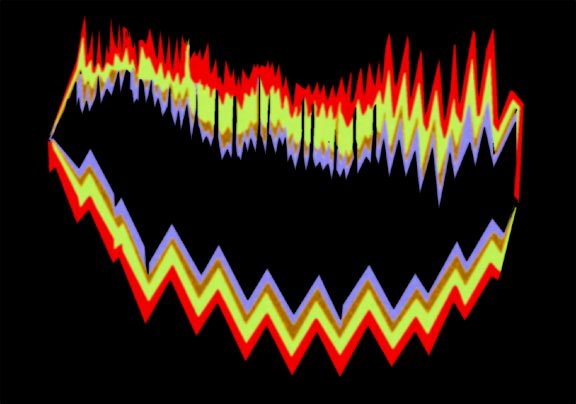

 Wikipedia Sitemap |
|
|  Useful Links 1 Useful Links 2 |

Close to 20% of Canadians live with migraines. The typical migraine is described as being pulsatile on one side of the head with mild to severe pain that interferes with daily routines. It is often associated with nausea, vomiting and sensitivity to light.
Migraines tend to have prodromes and auras. Prodromes are symptoms that precede the headache such as irritability, depression, loss of appetite and restlessness. An aura is a symptom that precedes the migraine headache and may consist of visual changes such as: flashes or tunnel vision, tingling, numbness, and, in some cases, actual paralysis may occur.
The exact mechanism of migraine headaches involves minor swelling and inflammation within the brain structures. This is accompanied by constriction of the blood vessel supplying blood to the brain itself.
Migraines tend to start early in life, and affect women more than men. Many different substances have been implicated in having a role as migraine triggers. Common food triggers include: chocolate, alcohol, red wine, yeast in baked goods, certain cheeses, pickled meats containing nitrites or amines, and certain beans. Many non-food triggers also exist. Emotional states, menstruation, hunger, intense sexual activity, smoking, looking at computer screens and sleep deprivation can all trigger migraines. Migraines are linked to strokes.
People who experience auras with their migraine are twice as likely to suffer a stroke. Women who use birth control pills and suffer aura associated migraines raise their risk by almost seven fold. Women who smoke, take birth control pills, and have classical migraines, are at an even higher risk for strokes. Migraines tend to cluster in family groups. Menopause certainly improves the migraine prone state, and it is rare to see a new onset of migraines in older people.
Two general approaches are used in migraine treatment. The more sensible approach involves identifying a person's migraine triggers and trying to avoid them. This is sometimes coupled with using medications to prevent onset. For persons who only get the occasional migraine, a different approach makes more sense.
Cambia is a newer migraine treatment available in Canada that uses an old molecule in a different format. Powdered diclofenac is mixed with water and drunk at the onset. It may work for some other headaches. Adding cold compresses, massaging the temples and avoiding bright light helps. Sometimes narcotics like oxycontin are used, but are discouraged due to addiction potential, and notoriety of causing rebound headaches. Triptans which are a different class of migraine drugs than Cambia work by stopping the vasoconstriction of cerebral blood vessels by binding to specific serotonin receptors in these vessels.
Recently, caution has been raised about heart patients using these medications. Sometimes migraines are so disabling that hospitalization is required and various intravenous cocktails are employed in the hopes of relieving them. Talk to your doctor about the various options.
Related resources:
● Prevention: The Future of Migraine Therapy. Stopping a migraine headache before it ever begins is the new focus of treatments by Jeanie Lerche Davis, WebMD Feature, Migraines and Headaches Health Centre.
● Nerve Stimulator May Provide Effective Drug-Free Migraine Treatment by Joseph Nordqvist. Copyright: Medical News Today.
● Symptoms of a Migraine: The Symptoms and Stages of a Migraine Attack by Teri Robert, Medically reviewed by Nicholas R. Metrus, MD, Verywell Health, Sep. 22, 2020.
● Migraine: Symptoms and Causes by Mayo Clinic Staff.
● Migraine: Diagnosis and Treatment by Mayo Clinic Staff.
● Electric New Treatment Offers Hope for Migraine Sufferers: Stimulator Is Implanted and Activated by Remote Control from CBS New York, October 14, 2013.
● Get Rid of Migraines Naturally and Fast! YouTube video, 7:39 min. Published by Milton Chiropractic Clinic Cambridge, Apr 8, 2020. The video describes the 6 most common triggers for migraine and what the best natural remedy/coping mechanisms is for each one of them. The 6 most common triggers for Migraines are:
1. Food
2. Stress
3. Intestinal Issues (IBS, Celiac Disease)
4. Hormones
5. Idiopathic
6. The Neck
● Migraine Headache: Overview by Jasvinder Chawla, MD, MBA; Chief Editor: Helmi L Lutsep, MD. from eMedicine. Medscape. Signs and symptoms, Diagnosis, Management. Article includes 8 images:

● Migraine Mechanism by Craig Blackwell, MD, Fellow American Academy of Ophthalmology. YouTube video, 14:25 min. Dr. Craig Blackwell explains: What is going on in the Brain. Visual Aura and Headache. Cortical Spreading Depression. Trigeminal Nerve carrying Pain Impulses. Role of Serotonin. Treatment with Triptans and CGRP Blocker.
● What Are Migraines? YouTube video, 11:05 min. Published by Institute of Human Anatomy, Feb 21, 2020. Jonathan from the Institute of Human Anatomy, describes the underlying mechanisms, anatomy, and symptoms of migraines.
Head Massage - 5 Simple Exercises to Reduce Headaches. Video, 3:39 min. Demonstration of exercises by Beijing doctor (in Mandarin Chinese) to help reduce headaches / migraines. View video to copy movements:
• 1. Rub head from front to back with both hands as if combing hair, 20 times .
• 2. Rub over both ears top to bottom, 20 times.
• 3. Massage forehead and temporal area, 20 times.
• 4. Locate grooves at base of skull in neck region, massage with thumbs, 20 times.
• 5. Relax hands and lightly tap all over head for 1 minute.
● Migraine from Wikipedia, the free encyclopedia.
● Migraine from MedlinePlus.
● Migraine Headache from MedicineNet.com.
● Migraines: Myth & Reality from Migraines.org, National Migraine Association. M.A.G.N.U.M.: Migraine Awareness Group: A National Understanding for Migraineurs.
● Migraine Treatment & Management: Current Treatment Methods from MAGNUM.
● Migraine Information Page from National Institute of Neurological Disorders and Stroke (NINDS), National Institutes of Health (NIH).